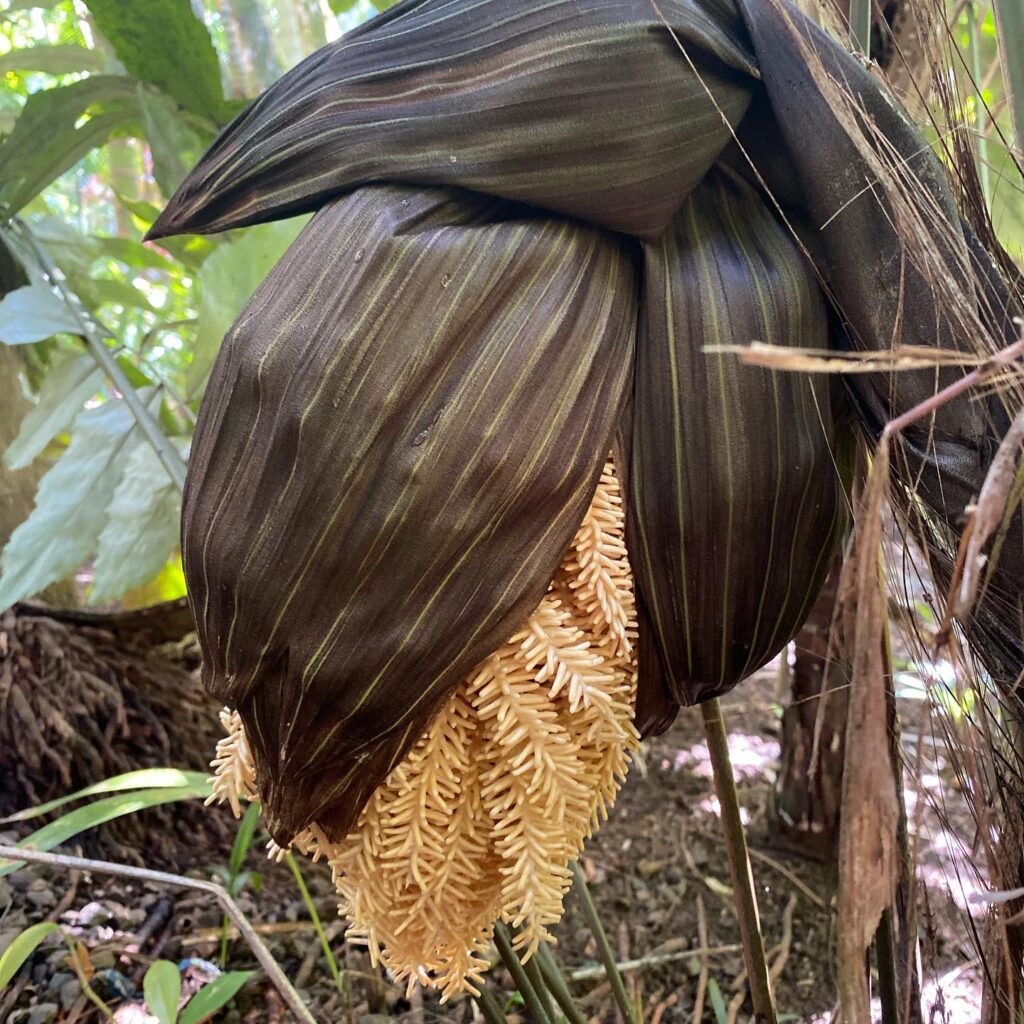
Looking Into the Realm of Poets
“Director’s Notes” are excerpts from our monthly email newsletter, “Stories from the Garden.” Subscribe and see past issues here.
Dear Friends,
One afternoon last week, as we walked along the northern edge of the garden, we met a distichous fishtail palm called tahkal in its native Bhutan, katong in India, tao pha in Laos, minbaw, trung, zanong in Myanmar. Also known as Wallichia disticha, this palm greeted us with a striped and swollen spathe, the large bract from which the inflorescence emerges. Our board members had gathered in the garden for the first time in two and a half years, some for the first time ever. There where the fishtail palm grows, we met one storyteller among thousands. We encountered it at a heightened moment in its story, and in ours. We had spent the morning lingering in the dynamic and creative tensions that animate the work of The Merwin Conservancy: garden and forest, preservation and perpetual change, past and future, language and land. And we had asked ourselves: what lies at the confluence of palms and poems here in the garden?
As our conversations unfolded we came to see that we are tending a space of possibilities, where languages—worded and not—await encounters with the imagination. This garden, and every garden, is alive with stories, many in languages that thrive beyond the edges of our knowledge, and often beyond the self-imposed limits of our perception. Some we can access collectively, as we approach the garden together, and through various perspectives across the arts and sciences. Last week alone I walked the paths with a marine biologist, an ethnobotanist, a poet, and with my seven year-old son, who bounded along among the palms with the freshest of eyes. Each brings a distinct language and lens, and illuminates a different facet of a prism. We also come to languages of place individually through stillness and attention. These never fail to reveal the subtleties too often awash in our wake. Through all of these, we humans co-create stories with land through reciprocal exchange, and through the perpetual cycle of listening and responding that W.S. Merwin practiced daily here in Peʻahi.
In the days since our garden walk, we’ve returned to our fishtail palm. The spathe has burst open and the inflorescence spilled out. This display tells one story—that of its life cycle. The species lives about 15 years, and only in the last years of its life will it flower and fruit, over and over again until its death. This first flowering bends this storyline toward its end, and also toward a new beginning for the next generation. Even as we marvel at this wild display and similar spectacles to come, we are reminded to look also beyond astonishing biological impulses, past this palm’s many names, and into the realm of poets, those who evoke in words that which lies beyond the inherent limitations of the very medium they employ.
It is a joy to listen, learn, and marvel at what we don’t yet and can’t know, and to tend these possibilities for all who encounter this place. Thank you for joining us!
With warm wishes,
Sonnet